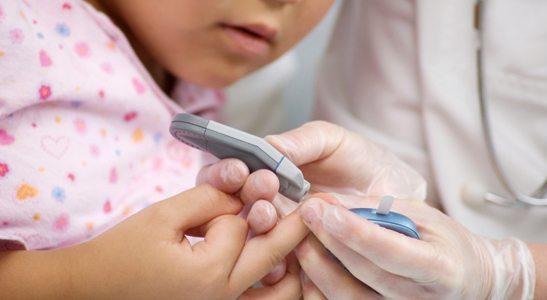The prevalence of diabetes in the United States is significant, although many people are unaware of the symptoms. Diabetes Awareness Month is in November. This indicates that now is an excellent opportunity to review your understanding of diabetes! With years of experience focusing on endocrinology and diabetes, Jeanette Ropp, MS, RDN, CDE, can help. In this piece, she gives an overview of diabetes, covering everything from recognizing the symptoms to day-to-day living with it.
What Are The Most Common Types Of Diabetes?
There are several types of diabetes, the most common being type 1, type 2, and gestational diabetes. Each type has a different impact on the individual.
1. Type 1 is a rare autoimmune disease that affects 1.6 million Americans.
2. Type 2 is the most common form of diabetes, affecting more than 10 percent of Americans.
3. Gestational diabetes occurs in two to 10 percent of pregnant women in the United States.
4. Prediabetes is a significant risk factor for developing type 2 diabetes, and one in three Americans have it.
There are other less common types of diabetes, and in recent years a few more have been identified. Your doctor can give you lab tests to determine what type of diabetes you have and how it should be treated.
Is diabetes preventable?
Worldwide, millions of people battle the fatal disease of diabetes. The two types of diabetes are type 1 and type 2. Type 1 diabetes, an autoimmune disorder, is brought on by the body’s immune system attacking the cells in the pancreas that make insulin, the hormone that controls blood sugar levels. A person with Type 1 diabetes needs to take insulin to survive.
People with Type 1 diabetes will also have a difficult time securing various types of insurance. Matt Schmidt with Diabetes Life Solutions mentions “life insurance with type 1 diabetes is a challenge for many people. Not only are premiums higher, but you’ll have fewer choices of insurance providers. The same applies to health, long term care, and disability insurance.”
Type 2 diabetes is a disorder in which the body either produces insufficient insulin or improperly utilizes the insulin it does produce. Although a person’s ethnicity and DNA may also affect their likelihood of acquiring Type 2 diabetes, this condition is largely avoidable. This is why someone may not eventually get Type 2 diabetes even if they do not exercise, do not eat healthily, or have a larger body weight. To prevent lifestyle-related disorders like Type 2 diabetes, it’s critical to cultivate good habits and keep healthy body weight.
Chris Stocker with Diabetes 365 tells us the following “People with type 2 diabetes are usually viewed as a lower risk for insurance products compared to a person with type 1 diabetes. Most likely, premiums for personal insurance plans will be less expensive and easier to qualify for. We see life insurance for diabetics be approved without medical exams from time to time.”
There are many ways that you can prevent type 2 diabetes, including:
Eating healthy foods – including plenty of fruits, vegetables, whole grains, and lean protein.
Exercising regularly – aim for at least 30 minutes of physical activity daily.
Maintaining a healthy weight – losing just 5-10% of your total body weight if you’re overweight can help reduce your risk of type 2 diabetes.
It’s also important to be aware of your risk factors for type 2 diabetes and take steps to reduce them where possible. Some risk factors you can control include:
• Eating unhealthy foods
• Not getting enough exercise
• Being overweight or obese
• Having high blood pressure or cholesterol levels
• Having a family history of type 2 diabetes
There is no definitive answer to whether or not diabetes is preventable. The fact is that various factors contribute to the development of type 2 diabetes, and different people will be affected by these factors in different ways. While some people may be able to maintain a healthy weight and lifestyle habits with little effort, others may find it more difficult. Everyone must make an effort to eat mostly what they need and be active as much as possible to reduce the risk of developing lifestyle-driven diseases like type 2 diabetes.
Even if they had never had diabetes before, it is crucial for women with gestational diabetes to maintain a healthy weight and lifestyle following delivery. A woman who has gestational diabetes has an increased chance of getting type 2 diabetes in the future. You have impaired fasting glucose or prediabetes if your blood sugar is higher than usual but not high enough to be classified as diabetes. Healthy weight management and lifestyle decisions can help stop the advancement of this illness from type 2 diabetes.
Making these healthy choices is not always easy, but it is important for everyone’s health. By taking steps to prevent type 2 diabetes, we can reduce the number of people who develop this debilitating disease and improve our overall quality of life.
How do you know if you have diabetes?
Type 2 diabetes is a serious condition that, if left untreated, can lead to several health problems, including blindness, kidney failure, and even death. The good news is that Type 2 diabetes can be treated and, in many cases, even prevented. But how do you know if you have it?
Type 2 diabetes has several symptoms, although it also frequently has none. For this reason, it’s crucial to plan routine preventive healthcare appointments with your doctor and to get routinely screened for diabetes. Fatigue, increased hunger, impaired immune system or wound healing, blurred vision, increased thirst, urination, and memory loss or brain fog are typical signs of Type 2 diabetes.
Every part of our body is affected by high blood sugar levels. So, it’s important to be aware of the signs and symptoms of Type 2 diabetes so that you can get treatment if you need it. If you think you might have Type 2 diabetes, don’t hesitate to talk to your doctor. Early diagnosis and treatment is the key to preventing serious health problems.
What is a diabetes educator?
Certified diabetes educators are healthcare providers who specialize in diabetes management and education. They help patients to understand their condition better, develop self-care skills, and make informed decisions about their treatment. Certified diabetes educators have up-to-date knowledge of the latest diabetes treatments and research and can help tailor information to meet each patient’s specific needs. They can also provide support and guidance as patients work to achieve their health goals.
Diabetes: Myth versus fact
Diabetes is a very serious disease that should not be taken lightly. There are many myths and misconceptions about diabetes, but the truth is that there are many facts that people need to know about this disease. Below you will find some of the most important myths and facts about diabetes.
The first myth that needs to be debunked is that if you have someone in your family with diabetes, you can’t do anything to avoid getting it yourself. This is not true. Diabetes prevention, testing, and lifestyle interventions are all very important, and everyone should be aware of these measures to reduce their risk of developing diabetes.
Another common myth about diabetes is that it is a “death sentence”. This is also untrue. People with diabetes can live long, healthy lives with proper treatment and management. Diabetes is the seventh leading cause of death in the United States. However, it is important to note that diabetes can lead to other health complications if it is not managed properly.
One of the most important facts about diabetes is that it can be controlled through diet and exercise. Many people think they have to give up all their favorite foods once diagnosed with diabetes, but this is not true. Working with a doctor or nutritionist is important to create a meal plan that fits your individual needs and preferences. You may need to adjust your diet, but you don’t have to give up all your favorite foods.
Another important fact about diabetes is that it can be treated with medication and insulin injections. If you cannot control your blood sugar levels with diet and exercise alone, you may need to start taking medication or using insulin injections. This does not mean that you are doomed to a life of misery – with proper treatment, you can still live a full and happy life.
What now?
If you have diabetes or are concerned about your health, speak with your provider. While there is a wealth of printed and online information on diabetes, only your healthcare professional can properly identify and treat you.
Diabetes is a serious disease, and as the number of people with diabetes continues to grow, it’s important to understand what it is and how to deal with it. It is a condition that causes high blood sugar levels. This can lead to various health problems, including heart disease, stroke, kidney disease, and blindness.
If you think you may have diabetes, don’t wait to get help. Talk to your doctor today. Early diagnosis and treatment are essential for managing diabetes and preventing its serious complications.




